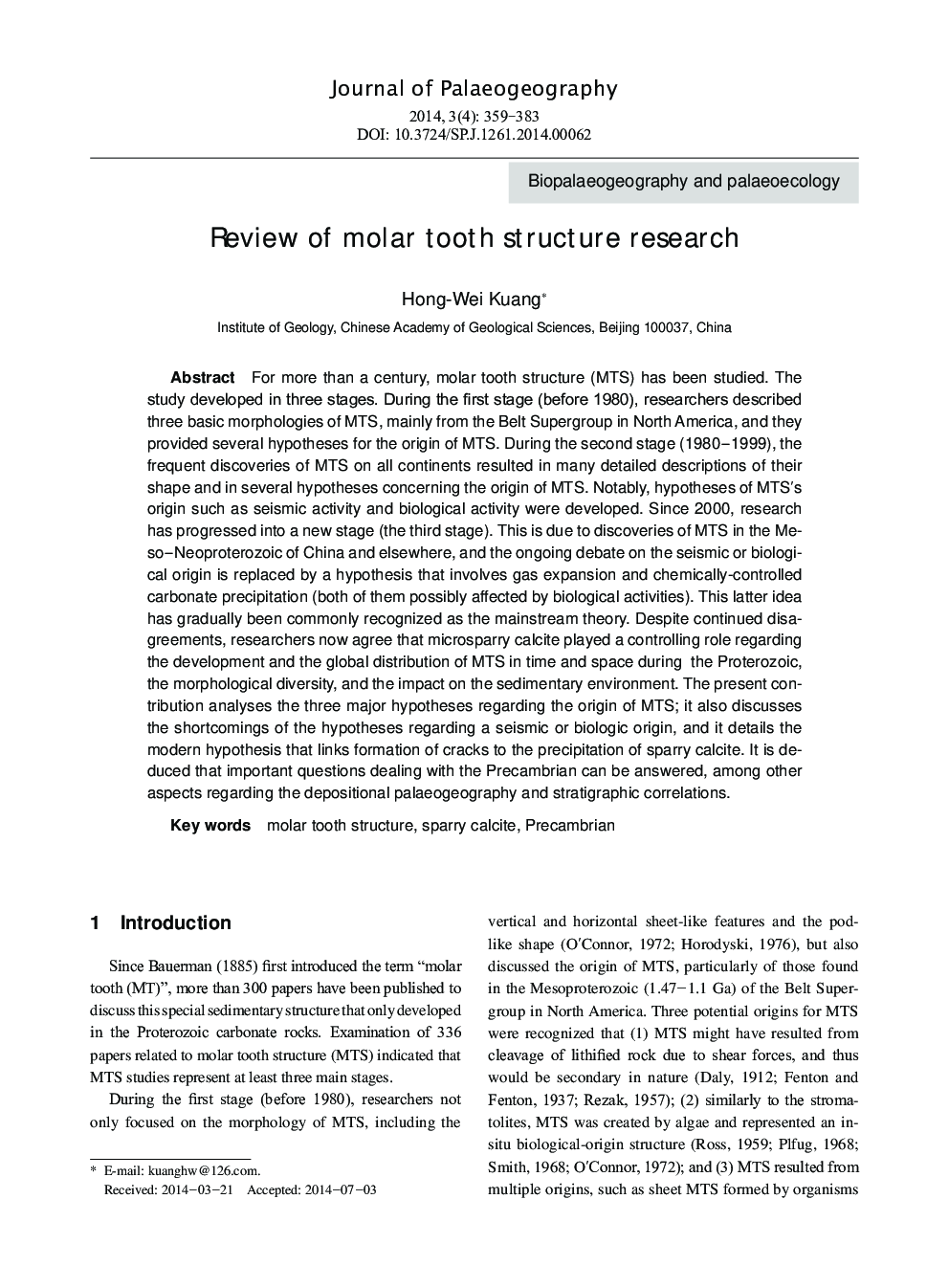| کد مقاله | کد نشریه | سال انتشار | مقاله انگلیسی | نسخه تمام متن |
|---|---|---|---|---|
| 4580993 | 1333671 | 2014 | 25 صفحه PDF | دانلود رایگان |
For more than a century, molar tooth structure (MTS) has been studied. The study developed in three stages. During the first stage (before 1980), researchers described three basic morphologies of MTS, mainly from the Belt Supergroup in North America, and they provided several hypotheses for the origin of MTS. During the second stage (1980–1999), the frequent discoveries of MTS on all continents resulted in many detailed descriptions of their shape and in several hypotheses concerning the origin of MTS. Notably, hypotheses of MTS’s origin such as seismic activity and biological activity were developed. Since 2000, research has progressed into a new stage (the third stage). This is due to discoveries of MTS in the Meso–Neoproterozoic of China and elsewhere, and the ongoing debate on the seismic or biological origin is replaced by a hypothesis that involves gas expansion and chemically-controlled carbonate precipitation (both of them possibly affected by biological activities). This latter idea has gradually been commonly recognized as the mainstream theory. Despite continued disagreements, researchers now agree that microsparry calcite played a controlling role regarding the development and the global distribution of MTS in time and space during the Proterozoic, the morphological diversity, and the impact on the sedimentary environment. The present contribution analyses the three major hypotheses regarding the origin of MTS; it also discusses the shortcomings of the hypotheses regarding a seismic or biologic origin, and it details the modern hypothesis that links formation of cracks to the precipitation of sparry calcite. It is deduced that important questions dealing with the Precambrian can be answered, among other aspects regarding the depositional palaeogeography and stratigraphic correlations.
Journal: Journal of Palaeogeography - Volume 3, Issue 4, October 2014, Pages 359–383
